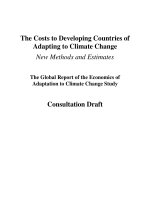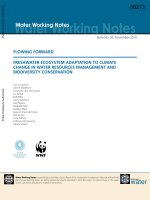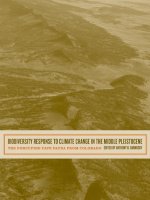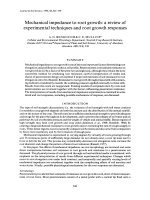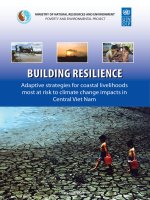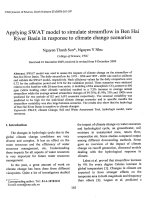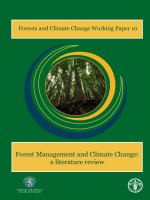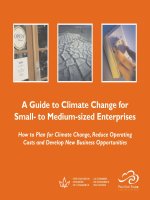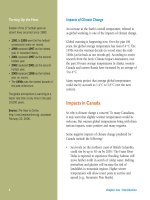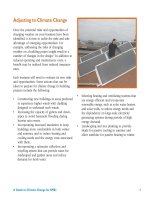Livestock contribution to climate change – A review
Bạn đang xem bản rút gọn của tài liệu. Xem và tải ngay bản đầy đủ của tài liệu tại đây (208.17 KB, 9 trang )
������������������������������������������������������������������������������������������������������������������������������������������������������������������������������������������������������������������������������������������������������������������������������������������������������������������������������������������������������������������������������������������������������������������������������������������������������������������������������������������������������������������������������������������������������������������������������������������������������������������������������������������������������������������������������������������������������������������������������������������������������������������������������������������������������������������������������������������������������������������������������������������������������������������������������������������������������������������������������������������������������������������������������������������������������������������������������������������������������������������������������������������������������������������������������������������������������������������������������������������������������������������������������������������������������������������������������������������������������������������������������������������������������������������������������������������������������������������������������������������������������������������������������������������������������������������������������������������������������������������������������������������������������������������������������������������������������������������������������������������������������������������������������������������������������������������������������������������������������������������������������������������������������������������������������������������������������������������������������������������������������������������������������������������������������������������������������������������������������������������������������������������������������������������������������������������������������������������������������������������������������������������������������������������������������������������������������������������������������������������������������������������������������������������������������������������������������������������������������������������������������������������������������������������������������������������������������������������������������������������������������������������������������������������������������������������������������������������������������������������������������������������������������������������������������������������������������������������������������������������������������������������������������������������������������������������������������������������������������������������������������������������������������������������������������������������������������������������������������������������������������������������������������������������������������������������������������������������������������������������������������������������������������������������������������������������������������������������������������������������������������������������������������������������������������������������������������������������������������������������������������������������������������������������������������������������������������������������������������������������������������������������������������������������������������������������������������������������������������������������������������������������������������������������������������������������������������������������������������������������������������������������������������������������������������������������������������������������������������������������������������������������������������������������������������������������������������������������������������������������������������������������������������������������������������������������������������������������������������������������������������������������������������������������������������������������������������������������������������������������������������������������������������������������������������������������������������������������������������������������������������������������������������������������������������������������������������������������������������������������������������������������������������������������������������������������������������������������������������������������������������������������������������������������������������������������������������������������������������������������������������������������������������������������������������������������������������������������������������������������������������������������������������������������������������������������������������������������������������������������������������������������������������������������������������������������������������������������������������������������������������������������������������������������������������������������������������������������������������������������������������������������������������������������������������������������������������������������������������������������������������������������������������������������������������������������������������������������������������������������������������������������������������������������������������������������������������������������������������������������������������������������������������������������������������������������������������������������������������������������������������������������������������������������������������������������������������������������������������������������������������������������������������������������������������������������������������������������������������������������������������������������������������������������������������������������������������������������������������������������������������������������������������������������������������������������������������������������������������������������������������������������������������������������������������������������������������������������������������������������������������������������������������������������������������������������������������������������������������������������������������������������������������������������������������������������������������������������������������������������������������������������������������������������������������������������������������������������������������������������������������������������������������������������������������������������������������������������������������������������������������������������������������������������������������������������������������������������������������������������������������������������������������������������������������������������������������������������������������������������������������������������������������������������������������������������������������������������������������������������������������������������������������������������������������������������������������������������������������������������������������������������������������������������������������������������������������������������������������������������������������������������������������������������������������������������������������������������������������������������������������������������������������������������������������������������������������������������������������������������������������������������������������������������������������������������������������������������������������������������������������������������������������������������������������������������������������������������������������������������������������������������������������������������������������������������������������������������������������������������������������������������������������������������������������������������������������������������������������������������������������������������������������������������������������������������������������������������������������������������������������������������������������������������������������������������������������������������������������������������������������������������������������������������������������������������������������������������������������������������������������������������������������������������������������������������������������������������������������������������������������������������������������������������������������������������������������������������������������������������������������������������������������������������������������������������������������������������������������������������������������������������������������������������������������������������������������������������������������������������������������������������������������������������������������������������������������������������������������������������������������������������������������������������������������������������������������������������������������������������������������������������������������������������������������������������������������������������������������������������������������������������������������������������������������������������������������������������������������������������������������������������������������������������������������������������������������������������������������������������������������������������������������������������������������������������������������������������������������������������������������������������������������������������������������������������������������������������������������������������������������������������������������������������������������������������������������������������������������������������������������������������������������������������������������������������������������������������������������������������������������������������������������������������������������������������������������������������������������������������������������������������������������������������������������������������������������������������������������������������������������������������������������������������������������������������������������������������������������������������������������������������������������������������������������������������������������������������������������������������������������������������������������������������������������������������������������������������������������������������������������������������������������������������������������������������������������������������������������������������������������������������������������������������������������������������������������������������������������������������������������������������������������������������������������������������������������������������������������������������������������������������������������������������������������������������������������������������������������������������������������������������������������������������������������������������������������������������������������������������������������������������������������������������������������������������������������������������������������������������������������������������������������������������������������������������������������������������������������������������������������������������������������������������������������������������������������������������������������������������������������������������������������������������������������������������������������������������������������������������������������������������������������������������������������������������������������������������������������������������������������������������������������������������������������������������������������������������������������������������������������������������������������������������������������������������������������������������������������������������������������������������������������������������������������������������������������������������������������������������������������������������������������������������������������������������������������������������������������������������������������������������������������������������������������������������������������������������������������������������������������������������������������������������������������������������������������������������������������������������������������������������������������������������������������������������������������������������������������������������������������������������������������������������������������������������������������������������������������������������������������������������������������������������������������������������������������������������������������������������������������������������������������������������������������������������������������������������������������������������������������������������������������������������������������������������������������������������������������������������������������������������������������������������������������������������������������������������������������������������������������������������������������������������������������������������������������������������������������������������������������������������������������������������������������������������������������������������������������������������������������������������������������������������������������������������������������������������������������������������������������������������������������������������������������������������������������������������������������������������������������������������������������������������������������������������������������������������������������������������������������������������������������������������������������������������������������������������������������������������������������������������������������������������������������������������������������������������������������������������������������������������������������������������������������������������������������������������������������������������������������������������������������������������������������������������������������������������������������������������������������������������������������������������������������������������������������������������������������������������������������������������������������������������������������������������������������������������������������������������������������������������������������������������������������������������������������������������������������������������������������������������������������������������������������������������������������������������������������������������������������������������������������������������������������������������������������������������������������������������������������������������������������������������������������������������������������������������������������������������������������������������������������������������������������������������������������������������������������������������������������������������������������������������������������������������������������������������������������������������������������������������������������������������������������������������������������������������������������������������������������������������������������������������������������������������������������������������������������������������������������������������������������������������������������������������������������������������������������������������������������������������������������������������������������������������������������������������������������������������������������������������������������������������������������������������������������������������������������������������������������������������������������������������������������������������������������������������������������������������������������������������������������������������������������������������������������������������������������������������������������������������������������������������������������������������������������������������������������������������������������������������������������������������������������������������������������������������������������������������������������������������������������������������������������������������������������������������������������������������������������������������������������������������������������������������������������������������������������������������������������������������������������������������������������������������������������������������������������������������������������������������������������������������������������������������������������������������������������������������������������������������������������������������������������������������������������������������������������������������������������������������������������������������������������������������������������������������������������������������������������������������������������������������������������������������������������������������������������������������������������������������������������������������������������������������������������������������������������������������������������������������������������������������������������������������������������������������������������������������������������������������������������������������������������������������������������������������������������������������������������������������������������������������������������������������������������������������������������������������������������������������������������������������������������������������������������������������������������������������������������������������������������������������������������������������������������������������������������������������������������������������������������������������������������������������������������������������������������������������������������������������������������������������������������������������������������������������������������������������������������������������������������������������������������������������������������������������������������������������������������������������������������������������������������������������������������������������������������������������������������������������������������������������������������������������������������������������������������������������������������������������������������������������������������������������������������������������������������������������������������������������������������������������������������������������������������������������������������������������������������������������������������������������������������������������������������������������������������������������������������������������������������������������������������������������������������������������������������������������������������������������������������������������������������������������������������������������������������������������������������������������������������������������������������������������������������������������������������������������������������������������������������������������������������������������������������������������������������������������������������������������������������������������������������������������������������������������������������������������������������������������������������������������������������������������������������������������������������������������������������������������������������������������������������������������������������������������������������������������������������������������������������������������������������������������������������������������������������������������������������������������������������������������������������������������������������������������������������������������������������������������������������������������������������������������������������������������������������������������������������������������������������������������������������������������������������������������������������������������������������������������������������������������������������������������������������������������������������������������������������������������������������������������������������������������������������������������������������������������������������������������������������������������������������������������������������������������������������������������������������������������������������������������������������������������������������������������������������������������������������������������������������������������������������������������������������������������������������������������������������������������������������������������������������������������������������������������������������������������������������������������������������������������������������������������������������������������������������������������������������������������������������������������������������������������������������������������������������������������������������������������������������������������������������������������������������������������������������������������������������������������������������������������������������������������������������������������������������������������������������������������������������������������������������������������������������������������������������������������������������������������������������������������������������������������������������������������������������������������������������������������������������������������������������������������������������������������������������������������������������������������������������������������������������������������������������������������������������������������������������������������������������������������������������������������������������������������������������������������������������������������������������������������������������������������������������������������������������������������������������������������������������������������������������������������������������������������������������������������������������������������������������������������������������������������������������������������������������������������������������������������������������������������������������������������������������������������������������������������������������������������������������������������������������������������������������������������������������������������������������������������������������������������������������������������������������������������������������������������������������������������������������������������������������������������������������������������������������������������������������������������������������������������������������������������������������������������������������������������������������������������������������������������������������������������������������������������������������������������������������������������������������������������������������������������������������������������������������������������������������������������������������������������������������������������������������������������������������������������������������������������������������������������������������������������������������������������������������������������������������������������������������������������������������������������������������������������������������������������������������������������������������������������������������������������������������������������������������������������������������������������������������������������������������������������������������������������������������������������������������������������������������������������������������������������������������������������������������������������������������������������������������������������������������������������������������������������������������������������������������������������������������������������������������������������������������������������������������������������������������������������������������������������������������������������������������������������������������������������������������������������������������������������������������������������������������������������������������������������������������������������������������������������������������������������������������������������������������������������������������������������������������������������������������������������������������������������������oductive status of Holstein and
Jersey cows in the United States. J.
Dairy Sci. 92: 3517–3528.
Oliver, D.M., Fish, R.D., Winter, M.,
Hodgson, C.J., Heathwaite, A.L.and
Chadwick, D.R. 2012. Valuing local
knowledge as a source of expert data:
farmer engagement and the design of
decision support systems. Environ.
Modell. Software. 36: 76–85.
Renaudeau, D., Collin, A., Yahav, S., De
Basilio, V., Gourdine, J.L.and Collier,
R.J. 2012. Adaptation to hot climate
and strategies to alleviate heat stress in
livestock production. Animal. 6 (05):
707–728.
Rowlinson, P., Steele, M.andNefzaoui, A.
2008. Livestock and global climate
change: Adaptation I and II. In:
Rowlinson, P., Steel, M., Nefzaoui, A.
(Eds.), Livestock and Global Climate
Change
Conference
Proceeding.
Cambridge University Press, Tunisia.
pp. 56–85.
Sejian, V., Lal, R., Lakritz,J.and Ezeji, T.
2010. Measurement and prediction of
enteric methane emission. Int. J.
Biomateorol. DOI: 10.1007/s00484010-0356-7.
Sejian, V., Kumar, K., Sharma, K.C. and
Naqvi, S.M.K. 2011. Climate change
and livestock production: Concept of
multiple stresses and its significance.
In: NAIP Sponsored National Training
manual on “Carbon sequestration,
carbon trading and climate change”.
Sharma, S., Bhattacharya,A. and Garg,
A.2006. Greenhouse gas emission
from India: A perspective. Curr. Sci.
90(3): 326-333.
Singhal K. K. and MadhuMohini. 2002.
Uncertainty reduction in methane and
nitrous oxide gases emission from
livestock in India. Project report,
Dairy Cattle Nutrition Division,
National
Dairy
Research
Institute,Karnal, India. pp 62.
Singhal, K.K., Mohini, M., JhaA.K. and
Gupta, P.K. 2005. Methane emission
estimates from enteric fermentation in
Indian livestock: Dry matter intake
approach. Curr. Sci. 88(1): 119-127.
Sirohi, S. and Michaelowa, A.2007. Sufferer
and cause: Indian livestock and
1106
Int.J.Curr.Microbiol.App.Sci (2019) 8(9): 1099-1107
climate change. Climatic Change.
85:285–298.
Smith, K., Cumby, T., Lapworth, J.,
Misselbrook, T. and Williams, A.
2007. Natural crusting of slurry
storage as an abatement measure for
ammonia emissions on dairy farms.
Biosyst. Eng. 97: 464–471.
Smith, J.P., Pearce, B.D.and Wolfe, M.S.
2012. Reconciling productivity with
protection of the environment: is
temperate agroforestry the answer?
Renewable Agric. Food Syst. 28 (1):
80–92.
Steinfeld, H., Gerber, P., Wassenaar, T.,
Castel, V., Rosales, M. and de Haan,
C. 2006. Livestock‟s Long Shadow:
Environmental Issues and Options.
Rome:
Food
and
Agriculture
Organization of the United Nations.
Swamy, M. and Bhattacharya, S.2006.
Budgeting anthropogenic greenhouse
gas emission from Indian livestock
using
country-specific
emission
coefficients. Curr. Sci. 91(10): 13401353.
Thornton, P., Van de Steeg., J., Notenbaert,
M.H. and Herrero, M. 2009. The
impacts of climate change on livestock
and livestock systems in developing
countries: A review of what we know
and what we need to know. Agri.
Systems. 101: 113-127.
Turnbull, G. and Charme, B.D., 2001.
Methane Emissions-Reductions from
Ruminants, Market View, Annual
Spring Meeting, Phoenix, Arizona.
Upadhaya, R. C., Ashutosh, A. K., Gupta, S.
K.,Gupta, S.V.,Singh,S.V. and Nikita,
R. 2009. Inventory of methane
emission from livestock in India. In,
Global climate change and Indian
agriculture.Case studies from the
ICAR
Network
project.
P.K.
Aggarwal (Ed), ICAR, New Delhi. pp
117-122.
USDA (United States Department of
Agriculture), 2013. Climate Change
and Agriculture in the United States:
Effects and Adaptation. USDA
technical
bulletin,
Washington,DC. />oce/climate_change/effects_2012/CC
%20and%20Agriculture%20Report%
20%2802-04-2013%29b.pdf.
Wani, S.P., Rockstrom, J.andOweis, T. 2009.
Rainfed Agriculture: Unlocking the
Potential.
CAB
International,
Wallingford, UK.
How to cite this article:
Ramandeep Kaur, Parteek Singh Dhaliwal and Dhindsa, S.S. 2019. Livestock Contribution to
Climate Change – A Review. Int.J.Curr.Microbiol.App.Sci. 8(09): 1099-1107.
doi: />
1107
